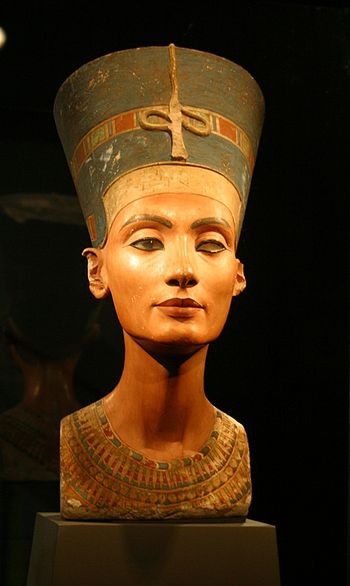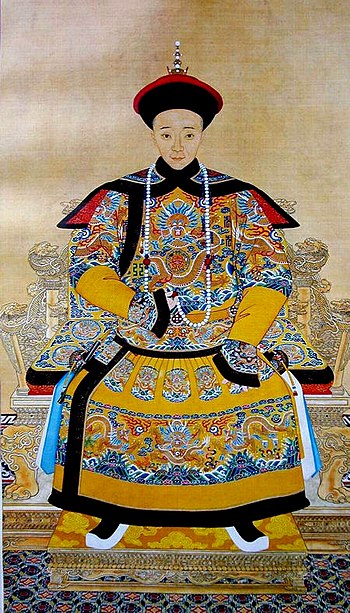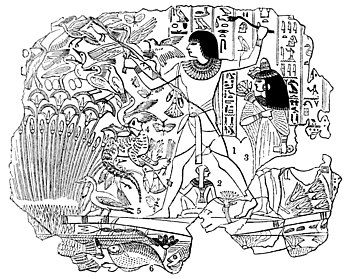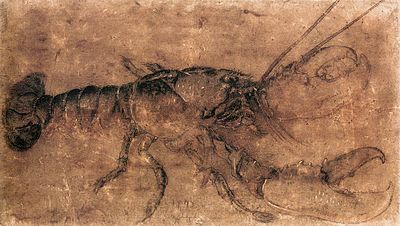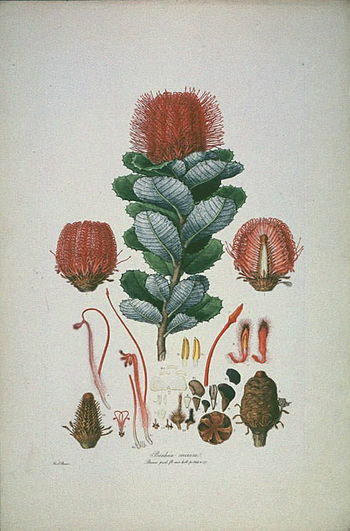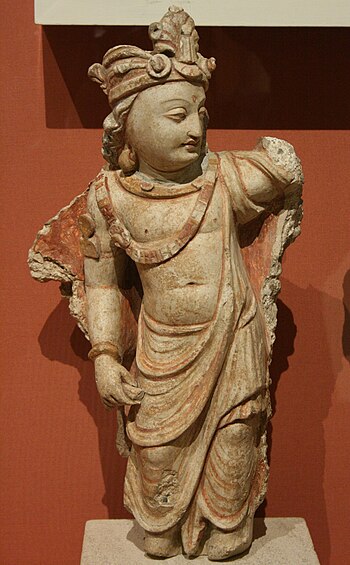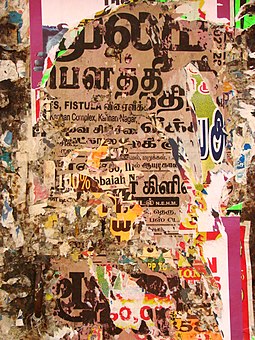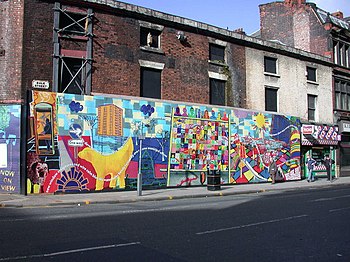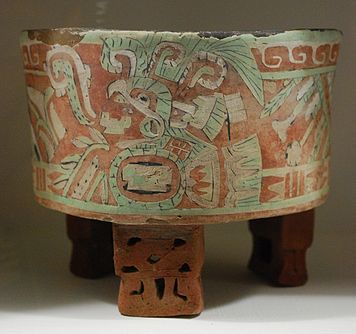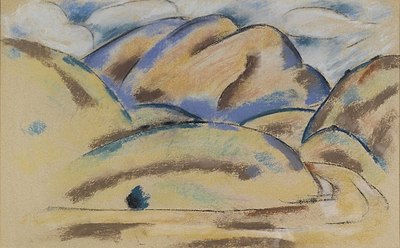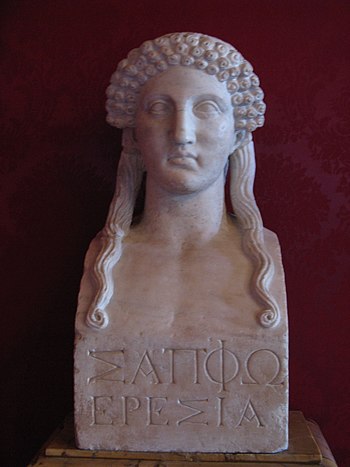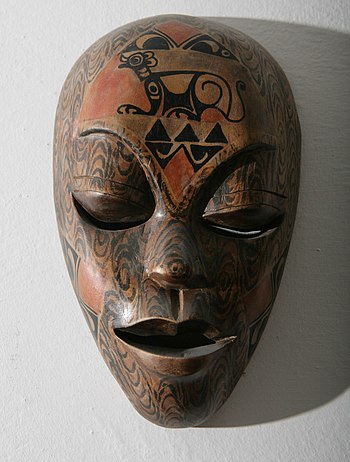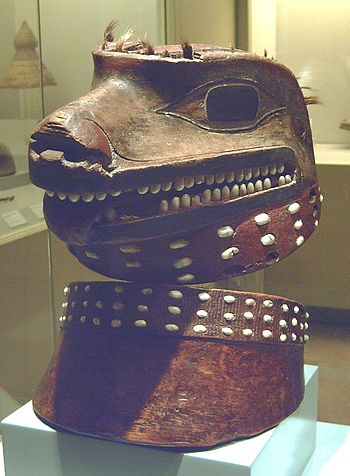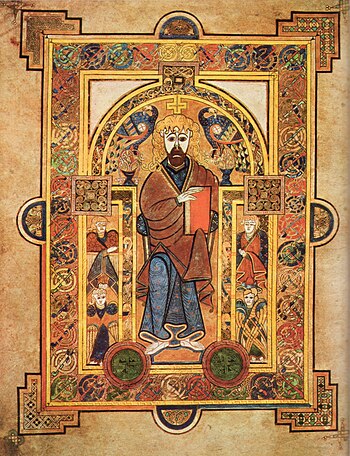Art Appreciation and Techniques/Module 1
The following is an initial page plan for module 1. The beginning text, before the colon, is the proposed page name:
- Introduction: description, objectives, introduction and definitions (beginning through 1.2)
- [page name]: form and content, aesthetics, subjective and objective perspectives (1.3-1.5)
- Artistic roles: artistic roles -- description, portraits, landscapes, scientific illustration, enhancing our world, narratives: how artists tell their stories, spirit/myth/fantasy (1.6-1.8)
- Artistic categories: fine art, popular culture, decorative arts (1.9)
- Artistic styles: naturalistic, abstract, non-objective, cultural style (1.10-1.11)
- Perception and visual awareness: perception and visual awareness (1.10)
- Summary, activity and assignment: (beginning at end of 1.12, 1.12.1-1.12.3, 1.13)
Contents
- 1 Module 1: Definitions, Artistic Roles, and Visual Thinking
- 1.1 Module 1 Description
- 1.2 Introduction and Definitions
- 1.3 Form and Content
- 1.4 Aesthetics
- 1.5 Subjective and Objective Perspectives
- 1.6 Artistic Roles
- 1.7 Narratives: How Artists Tell Their Stories
- 1.8 Spirit, Myth and Fantasy
- 1.9 Artistic Categories
- 1.10 Artistic Styles
- 1.11 Cultural Styles
- 1.12 Perception and Visual Awareness
- 2 Assignment
Module 1: Definitions, Artistic Roles, and Visual Thinking
Attributed to Saylor.org (adapted).
Module 1 Description
How would you define “art?” For many people, art is a specific thing: a painting, sculpture, or photograph, a dance, a poem, or a play. Art is uniquely human and tied directly to culture. As an expressive medium, it allows us to experience sublime joy, deep sorrow, confusion, and clarity. It gives voice to ideas and feelings, connects us to the past, reflects the present, and anticipates the future. Visual art is a rich and complex subject whose definition is in flux as the culture around it changes. This unit examines how art is defined and the different ways it functions in societies and cultures.
|
Upon successful completion of this unit, you will be able to:
|
Introduction and Definitions
This module gives a basic understanding of how art is defined and the different ways it functions in societies and cultures. It covers the following topics:
- Form and Content
- Aesthetics
- Subjective and Objective Perspectives
- Artistic Roles
- Artistic Categories
- Cultural Styles
- Ideas of Perception and Visual Awareness
Defining art
How would you define ‘art’? For many people art is a specific thing; a painting, sculpture or photograph, a dance, a poem or a play. It is all of these things, and more. They are mediums of artistic expression. Webster’s New Collegiate dictionary defines art as “The conscious use of skill and creative imagination especially in the production of aesthetic objects.” Yet art is much more than a medium, or words on a page. It is the expression of our experience. Joseph Brodsky hints at a definition of art in his poem “New Life”:
“Ultimately, one’s unbound / curiosity about these empty zones, / about these objectless vistas, / is what art seems to be all about.”
Art is uniquely human and tied directly to culture. It takes the ordinary and makes it extraordinary. As an expressive medium it allows us to experience sublime joy, deep sorrow, confusion and clarity. It tests our strengths, vulnerabilities and resolve. It gives voice to ideas and feelings, connects us to the past, reflects the present and anticipates the future. Along these lines, art history, combined with anthropology and literature, are three main sources in observing, recording and interpreting our human past. Visual art is a rich and complex subject whose definition is in flux as the culture around it changes. Because of this, how we define art is in essence a question of agreement. In this respect, we can look again to the dictionary’s definition for an understanding of exactly what to look for when we proclaim something as ‘art’.
|
Write About It Write a brief (approximately one page) response in your journal to the following questions.
Extend It Optional: Please keep in mind that the course learning objectives are only stepping stones towards gaining a deeper personal understanding and appreciation of art. So take a moment to reflect on these questions:
Journal your thoughts if you wish and refer back to them from time to time to see if you are experiencing progress in meeting your goals. Share it Optional: If you wish and are able, share your "Extend It" thoughts with others; e.g., other students in the the course, and invite their comments and helpful tips or experiences. Feel free to do the same for them.
|
Form and Content
The two basic considerations of art are form: its physical and visible characteristics, and content: the meaning we derive from the work. These two terms are roped together in the climb to understand what art has to offer us. As we examine art from different times, styles and cultures, the issues of form and content will apply to all of them.
Two basic considerations we need to be acquainted with are form: the physical and visible characteristics inherent in works of art, and content: the meaning we derive from them. Formal distinctions include a work’s size, medium (painting, drawing, sculpture or other kind of work) and descriptions of compositional elements such as the lines, shapes and colors involved. Issues of content include any visual clues that provide an understanding of what the art tells us. Sometimes an artwork’s content is vague or hidden and needs more information than is present in the work itself. Ultimately these two terms are roped together in the climb to understand what art has to offer us.
As we examine art from different time periods, styles and cultures, the issues of form and content will apply to all of them. We’ll explore form and content further in Modules 3 and 4.
Aesthetics
Aesthetics is the philosophical argument about the nature of beauty. It’s an idea central to any exploration of art. Aesthetics deals with notions of taste, cultural conventions and the judgments we make based on our perceptions.
As deep as visual art is embedded in the fabric of our lives, it still is the source of controversy and irony. It thrives on common experience yet contradicts ideas of ourselves. Art is part of the culture it’s created in, but can reflect many cultures at once. From where you and I stand today art has become probably more complex than ever. We need a way to access the visual information of our society, of past cultures, and cultures not known to us to have a way to understand what we are looking at.
Subjective and Objective Perspectives
So, the first level in approaching art is learning to LOOK at it. In future discussions we will spend more time in pure observation than you probably have done before. Generally, we tend to look at art in terms of "liking" it FIRST, and "looking" at it later. From this perspective, the "subjective" (knowledge residing in the emotions and thoughts of the viewer) almost completely dominates our way of looking at art. In the arts, it is especially important to begin to develop an informed or objective opinion rather than just an instinctual reaction. An objective view is one that focuses on the object’s physical characteristics as the main source of information. This does not mean that you will remove or invalidate your subjective feelings about a work. In fact you will find that the more informed you become, the more artwork will affect you emotionally and intellectually. It does mean that you will learn alternative ways to approach art, ways that allow you to find clues to meaning and to understand how art reflects and affects our lives.
It’s complex, but the satisfaction of looking at art comes from exploring the work to find meaning, not shying away from it simply because we don’t ‘understand’ it. Finding a definition is important because of the role art plays in societies and cultures.
Artistic Roles
Description
A traditional role of visual art is to describe our self and our surroundings. Some of the earliest artworks discovered are drawings and paintings of humans and wild animals on walls deep within prehistoric caves. One particular image is a hand print: a universal symbol of human communication.
Portraits
Today portraits, landscapes and still life are common examples of description. Portraits capture the accuracy of physical characteristics but the very best also transfer a sense of an individual’s unique personality. For thousands of years this role was reserved for images of those in positions of power, influence and authority. The portrait not only signifies who they are, but also solidifies class structure by presenting only the highest-ranking members of a society. The portrait bust of Egyptian Queen Nefertiti, dated to around 1300 BCE, exemplifies beauty and royalty. The full-length Imperial Portrait of Chinese Emperor Xianfeng not only shows realism in the likeness of the emperor, it exults in the patterns and colors of his robe and the throne behind him.
Landscapes
Landscapes – by themselves – give us detailed information about our natural and human made surroundings; things like location, architecture, time of day, year or season plus other physical information such as geological elements and the plants and animals within a particular region. ‘Nebamun Hunting Fowl’ (below) is loaded with specific plant and animal life in Egypt’s Nile river delta. This wall painting, dating from around 1350 BCE, shows the scribe Nebamun as he stands in a reed boat near a thicket of papyrus capturing ducks. His cat actively grabs at two birds as they try to fly away. Amongst the different species are hawks, butterflies, herons, songbirds, and fish. The figure sitting in the boat is his daughter. The larger female figure standing at the stern is his wife. The artist records the scene in great detail; he paints every feather on the birds, and every scale on the fish beneath the boat.
Scientific Illustration
Indeed, in many western cultures, the more realistic the rendering of a scene the closer to our idea of the ‘truth’ it becomes. In the 15th century German artist Albrecht Durer creates vivid works that show a keen sense of observation. His Lobster from 1495 is uncanny in its realism and sense of animation.
Out of this striving for accuracy and documentation developed the art of scientific illustration, an important part of scientific communication before the advent of photography. Scientific illustrators concentrate on accuracy and utility rather than aesthetics and coment many different types of scientific phenomena.
Enhancing Our World
Enhancing the world of our everyday lives is another role art plays. This role is more utilitarian than others. It includes textiles and product design, decorative embellishments to the items we use everyday and all the aesthetic considerations that create a more comfortable, expressive environment.
Narratives: How Artists Tell Their Stories
Artists can combine representation with more complex elements and situational compositions to bring a narrative component into art. Using subject matter – the objects and figures that inhabit a work of art -- as a vehicle for communicating stories and other cultural expressions, is a traditional function of visual art.
The narrative tradition is strong in many cultures throughout the world. They become a means to perpetuate knowledge, morals and ethics, and can signify historical contexts within specific cultures. Narrative takes many forms; the spoken or written word, music, dance and visual art are the mediums most often used. Many times one is used in conjunction with another. In his Migration Series Jacob Lawrence paints stark, direct images that communicate the realities of the African American experience in their struggle to escape the repression of the South and overcome the difficulties of adjusting to the big cities in the North.
In contrast, photographers used the camera lens to document examples of segregation in the United States. Here the image on film tells its poignant story about inequalities based on race.
Spirit, Myth and Fantasy
Tied to the idea of narrative, another artistic role is the exploration of other worlds beyond our physical one. This world is in many ways richer than our own and includes the world of spirit, myth, fantasy and the imagination; areas particularly suited for the visual artist. We can see how art gives a rich and varied treatment to these ideas. Artist Michael Spafford has spent his career presenting classical Greek myths through painting, drawing and printmaking. His spare, abstract style uses high contrast images to strong dramatic effect. A Smiling Figure from ancient Mexico portrays a god of dance, music and joy. A third example, Hieronymus Bosch’s painting the Temptation of Saint Anthony, gives the subject matter both spiritual and bizarre significance in the way they are presented. His creative imagination takes the subject of temptation and raises it to the realm of the fantastic. There is an entire module devoted to the idea of the other world later in this course.
Artistic Categories
Visual arts are generally divided into categories that make distinctions based on the context of the work. For example, Leonardo da Vinci’s ‘Mona Lisa’ would not fall into the same category as, say, a graphic poster for a rock concert. Some artworks can be placed in more than one category.
Fine Art
This category includes drawings, paintings, sculptures, photographs and, in the last decade, new media that are in museum collections and sold through commercial art galleries. Fine art has a distinction of being some of the finest examples of our human artistic heritage. Here is where you will find the Mona Lisa, and ancient sculpture, such as the Gandhara figure from India below, and stunning ceramics from different cultures and time periods.
Popular Culture
This category contains the many products and images we are exposed to every day. In the industrialized world, this includes posters, graffiti, advertising, popular music, television and digital imagery, magazines, books and movies (as distinguished from film, which we’ll examine in a different context later in the course). Also included are cars, celebrity status and all the ideas and attitudes that help define the contemporary period of a particular culture.
Handbills posted on telephone poles or the sides of buildings are graphic, colorful and informative, but they also provide a street level texture to the urban environment most of us live in. Public murals serve this same function. They put an aesthetic stamp on an otherwise bland and industrialized landscape.
Decorative Arts
Sometimes called "crafts," this is a category of art that shows a high degree of skilled workmanship in its production. Craft works are normally associated with utilitarian purposes, but can be aesthetic works in themselves, often highly decorated. The Mexican ceramic vessel below is an example. Handmade furniture and glassware, fine metalworking and leather goods are examples of craft.
Artistic Styles
The search for truth is not exclusive to representational art. From viewing many of the examples so far you can see how individual artists use different styles to communicate their ideas. Style refers to a particular kind of appearance in works of art. It’s a characteristic of an individual artist or a collective relationship based on an idea, culture or artistic movement. Following is a list and description of the most common styles in art.
Naturalistic
A naturalistic style uses recognizable images with a high level of accuracy in their depiction. Naturalism also includes the idealized object: one that is modified to achieve a kind of perfection within the bounds of aesthetics and form. William Sydney Mount’s painting The Bone Player gives accuracy in its representation and a sense of character to the figure, from his ragged-edged hat to the button missing from his vest. Mount treats the musician’s portrait with a sensitive hand, more idealized by his handsome features and soft smile. Note: click the image for a larger view.
Abstract
An abstract style is based on a recognizable object but which is then manipulated by distortion, scale issues or other artistic devices. Abstraction can be created by exaggerating form, simplifying shapes or the use of strong colors. Let’s look at three landscapes with varying degrees of abstraction in them to see how this style can be so effective. In the first one, Marsden Hartley uses abstraction to give the spare “Landscape, New Mexico” a sense of energy. Through the rounded forms and gesture in treatment we can discern hills, clouds, a road and some trees or bushes.
Georgia O’Keeffe’s Birch and Pine Trees -- Pink combines ‘soft’ and ‘hard’ abstraction into a tree-filled landscape dominated by a spray of orange paint suggesting a branch of birch leaves at the top left. Vasily Kandinsky’s Landscape with Red Spots, No. 2 goes further into abstraction, releasing color from its descriptive function and vastly simplifying forms. The rendering of a town at the lower left is reduced to blocky areas of paint and a black triangular shape of hill in the background. In all three of these, the artists manipulate and distort the ‘real’ landscape as a vehicle for emotion.
The definition of ‘abstract’ is relative to cultural perspective. That is, different cultures develop traditional forms and styles of art they understand within the context of their own culture (see ‘Cultural styles’ below), and difficult for another culture to understand. So what may be ‘abstract’ to one could be more ‘realistic’ in style to another. For example, the Roman female bust below looks very real from a western European aesthetic perspective. Under the same perspective, the African mask would be called ‘abstract’. Yet to the African culture that produced the mask it would appear more realistic.
In addition, the African mask shares some formal attributes such as the exaggerated eyes and mouth, and the painted lines and designs found on the Tlingit ‘Groundhog Mask’ (below under ‘Cultural styles’) from Canada’s west coast. It’s very possible these two cultures would see the Roman bust as the ‘abstract’ one. So it’s important that we understand artworks from cultures other than our own in the context in which they were originally created.
Questions of abstraction can also emerge from something as simple as our distance from an artwork. View and read about Fanny/Fingerpainting by the artist Chuck Close. At first glance it is a highly realistic portrait of the artist’s grandmother-in law. You can zoom it in to see how the painting dissolves into a grid of individual fingerprints, a process that renders the surface very abstract. With this in mind, we can see how any work of art is essentially made of smaller abstract parts that, when seen together, make up a coherent whole.
Non-Objective
Non-objective imagery has no relation to the ‘real’ world – that is – the work of art is based solely upon itself. In this way the non-objective style is completely different than abstract, and it’s important to make the distinction between the two. This style rose from the modern art movement in Europe, Russia and the United States during the first half of the 20th century. Pergusa Three by American artist Frank Stella uses organic and geometric shapes and strong color set against a heavy black background to create a vivid image. More than with other styles, issues of content are associated with a non-objective work’s formal structure.
Cultural Styles
Cultural styles refer to distinctive characteristics in artworks throughout a particular society or culture. Some main elements of cultural styles are recurring motifs, created in the same way by many artists. Cultural styles are formed over hundreds or even thousands of years and help define cultural identity. Let’s find evidence of this style by comparing two masks; one from Alaska and the other from Canada. The Yup'ik dance mask from Alaska is quite stylized with oval and rounded forms divided by wide bands in strong relief. The painted areas outline or follow shapes. Carved and attached objects give an upward movement to the whole mask and the face carries an animated expression.
By comparison, a ‘Groundhog Mask’ from the Tlingit culture in coastal northwestern Canada exhibits similar forms and many of the same motifs. The two mouths are particularly similar to each other. Groundhog’s visage takes on human – like characteristics just as the Yup’ik mask takes the form of a bird. This cultural style ranges from western Alaska to northern Canada.
Celtic art from Great Britain and Ireland shows a cultural style that’s been identified for thousands of years. Its highly refined organic motifs include spirals, plant forms and zoomorphism. Intricate and decorative, the Celtic style adapted to include early book illustration. The Book of Kells is considered the pinnacle of this cultural style.
Perception and Visual Awareness
Visual information – images from media and the environment around us – dominates our perception. Our eyes literally navigate us through a visual landscape all our lives, and we all make decisions based on how and what we see. Separating the subjective and objective ways we see helps us become more visually aware of our surroundings. Scientifically, the process of seeing is the result of light passing through the lens in our eye, then concentrating it on the retina at the back of the eye. The retina has nerve cells that act like sponges, soaking up the information and sending it to the visual cortex of our brain. Here the light is converted to an image that we can perceive – the ‘truth’ – as we understand it to be. We are exposed to so much visual information every day, especially with the advent of mass media, that it’s hard to process all of it into specific meaning. Being visually aware is more complicated than just the physical act of seeing because our perceptions are influenced by exterior factors, including our own prejudices, desires and ideas about what the ‘truth’ really is. Moreover, cultural ties to perception are many. For example, let’s look at three images that share one particular element; that of raised arms, and see how we perceive each one according to what we know about them.
Art is a resource for questioning our perceptions about how objects and ideas present themselves. The Belgian artist Rene Magritte used his easel as a soapbox to confront the viewer with confounding visual information. Click the hyperlink to watch a short video where Magritte considers language and perception.
As was mentioned at the beginning of this module, there is a difference between looking and seeing. To look is to glance back and forth, aware of surface qualities in the things that come into our line of sight. To see is more about comprehending. After all, when we say “I see” we really mean that we understand. Seeing goes beyond appearances. So, as we confront the huge amounts of visual information coming at us we start to make choices about what we keep and what we edit out. We concentrate on that which has the most meaning for us: a street sign that helps us get home, a view of the mountains that lets us enjoy a part of nature’s spectacle, or the computer screen that allows us to gather information, whether it’s reading the content in this course or catching up on the day’s news or emails. Our gaze becomes more specific, and with that comes specific meaning. At this point what we see becomes part of what we know. It’s when we stop to contemplate what we see – the view of the mountain mentioned above, a portrait or simple visual composition that catches our eye – that we make reference to an aesthetic perception. That is, when something is considered for its visual properties alone, and their relation to our ideas of what is beautiful, as a vehicle for meaning.
No matter how visually aware we are, visual clues alone hinder our ability to fully comprehend what we see. Words, either spoken or read as text, help fill in the blanks to understanding. They provide a context, a historical background, religious function or other cultural significance to the art we are looking at. We ask others for information, or find it ourselves, to help understand the meaning. In a museum or gallery it may be wall text that provides this link, or a source text, website or someone knowledgeable about the art.
Now that we have a basic understanding of:
- what art is,
- the cultural roles it plays, and
- the different categories and styles,
we can now begin to explore more specific physical and conceptual issues surrounding it in the next module. Before we do this however, this is time to complete a quiz and some other learning activities.
|
|
Using the External Links (TO BE LINKED LATER) as a resource, find a work of art to answer the following questions. The artwork can be from any culture or time period.
2. Artistic styles change over time and throughout cultures, yet some forms are repeated despite the changes. We can examine these forms to aid in finding the meaning, or content, in them. View the three works of art from the hyperlinks below. They are all from different time periods and cultures. Notice how each one has a repeated formal element similar to the others. In your journal write at least one paragraph to explain each work of art. Your response should be at least 200 words.
Here are the images to view: |
Conclusion
You have now reached the end of Module 1. Before you proceed to the next module, make sure you have completed the activities and assignments. If you have been able to communicate with others, share ideas and suggestions, and communicate with an instructor if available, all the better. Look back at your personal goals in the "Extend it" section. If your studies through this module inspired ideas that can enhance your achievement of your goals, please make a note of them in your journal.
